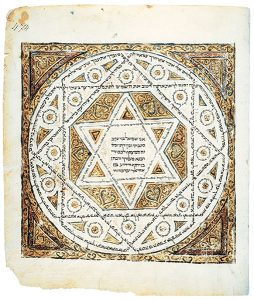MTMattie
Active Member
WikiThe eastern orthodox religion popped up in the 5th or 6th century. Catholicism had already screwed it all up prior, Only their translating remained=The Latin vulgate-The Codex sinacticus--so obviously Eastern orthodox used the codex sinacticus=altered and error filled.
The Eastern Orthodox Church traces its origins back to the 1st century, founded by Jesus Christ and the Apostles, with its formal structure developing through the early medieval period and the establishment of the first ecumenical councils. The church's current form was largely established by the 8th century.
1st century is not (popped up in the 5th or 6th centuries
The Schism of 1054: The Split between the Eastern Orthodox Church and the Roman Catholic Church
The origins of the Eastern Orthodox Church can be traced back to the early days of Christianity. It all began with the teachings of Jesus Christ and the apostles, who spread the message of the gospel throughout the Roman Empire. In the early centuries, the Christian faith was unified, with the Church in Rome serving as the center of authority.However, as time went on, political and theological differences began to emerge between the East and the West. One of the key factors that led to the split between the Eastern Orthodox Church and the Roman Catholic Church was the Schism of 1054. This event marked the official division between the two branches of Christianity.
The main cause of the Schism was the growing tensions between the Pope in Rome and the Patriarch in Constantinople, who both claimed authority over the entire Christian Church. Theological disagreements also played a role, with differences in liturgical practices and interpretations of doctrine becoming increasingly significant.
In addition, cultural and political factors contributed to the division. The East and the West had distinct ways of life, and the influence of the Byzantine Empire in the East and the Roman Empire in the West played a part in shaping the identities of the respective churches.
Formation of the Constantinople Patriarchate: A Pillar of Eastern Orthodoxy
The Constantinople Patriarchate holds a distinguished place in the history of Eastern Orthodoxy. Its formation can be traced back to the early days of Christianity, when the city of Constantinople (modern-day Istanbul) emerged as a center of religious influence and political power. The establishment of the Constantinople Patriarchate marked a significant milestone in the development of the Eastern Orthodox Church.
The roots of the patriarchate can be found in the Byzantine Empire, which was the successor to the Roman Empire in the eastern Mediterranean region. In 330 AD, Emperor Constantine the Great chose Byzantium (later renamed Constantinople) as the new capital of the empire. With the city’s strategic location and flourishing trade, it became a melting pot of cultures and religions.
As the Byzantine Empire embraced Christianity, the influence of the Bishop of Constantinople grew. Recognizing the city’s prominence, the Council of Chalcedon in 451 AD granted the Bishop of Constantinople the status of “first among equals” among the bishops of the Eastern Roman Empire, known as the Pentarchy. This decision laid the foundation for the formation of the Constantinople Patriarchate.
Over the centuries, the Constantinople Patriarchate played a pivotal role in shaping Eastern Orthodoxy. It served as a center of theological scholarship and spiritual guidance, fostering the development of liturgical practices and doctrinal traditions. The patriarchate’s authority extended beyond the Byzantine Empire and influenced other Orthodox churches throughout the world.
Today, the Constantinople Patriarchate remains a beacon of Eastern Orthodoxy, upholding ancient traditions while adapting to the challenges of the modern world. Its legacy as a pillar of faith and spiritual leadership continues to inspire millions of Orthodox Christians worldwide.
Another important dispute revolved around the authority of the bishop of Rome, who would later become known as the Pope. While the Eastern Orthodox Church recognized the primacy of Rome within the early Christian community, it did not accept the Pope’s claims to supreme authority over all bishops. Instead, the Eastern Orthodox Church emphasized the importance of the conciliar model, where decisions were made collectively by bishops in ecumenical councils. This distinction eventually led to the Great Schism of 1054, which resulted in the formal separation of the Eastern Orthodox Church from the Roman Catholic Church.



